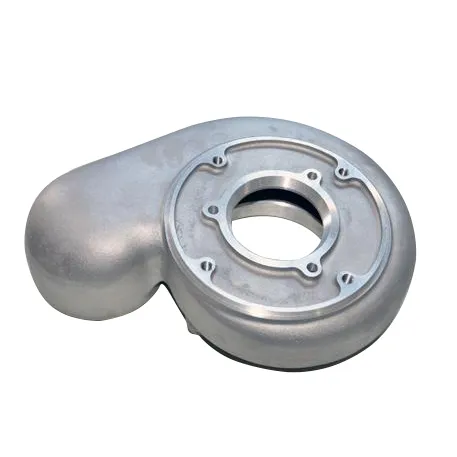Mobile:+86-311-808-126-83
Email:info@ydcastings.com
English
impeller casting process
The Impeller Casting Process An Overview
The impeller casting process is a crucial technology used in the manufacturing of impellers, which are essential components in various applications, such as pumps, compressors, and turbines. These components play a significant role in fluid mechanics by converting rotational energy into fluid flow, making their design and production critical to the efficiency and performance of machinery. In this article, we will explore the impeller casting process, its importance, key steps involved, and the materials used.
Importance of Impeller Casting
The efficiency of pumps and turbines heavily relies on the design and manufacturing precision of their impellers. These components must withstand high pressures and temperatures while maintaining structural integrity and performance. The casting process allows for the production of complex shapes that are often difficult to achieve with other methods, such as machining. Moreover, casting enables the creation of impellers with thinner walls and intricate designs, optimizing the flow of fluid and enhancing overall efficiency.
Key Steps in the Impeller Casting Process
1. Design and Modeling The first step in the impeller casting process is the design and modeling of the impeller. Engineers use computer-aided design (CAD) software to create precise models that take into account the fluid dynamics involved. Simulation tools can also be employed to predict the performance of the designed impeller under various operating conditions.
2. Pattern Creation Once the design is finalized, a pattern is created, typically from materials like wood, metal, or plastic. The pattern is a replica of the finished impeller and is used to form the mold. The mold must be accurate to ensure that the final product will meet the required specifications.
3. Mold Making The pattern is then used to create the mold, which can be made of sand, metal, or ceramic. The most common type of mold used in impeller casting is a sand mold, which is formed by packing sand around the pattern. After the sand has been compacted, the pattern is removed, leaving a cavity in the shape of the impeller.
4. Melting and Pouring In this step, the chosen metal alloy is melted in a furnace at high temperatures. Common materials used for impellers include aluminum, bronze, and stainless steel due to their favorable mechanical properties and corrosion resistance. After the metal reaches the appropriate temperature, it is poured into the mold cavity.
impeller casting process

5. Cooling and Solidification Once the molten metal is poured, it begins to cool and solidify within the mold. The cooling rate can significantly affect the final properties of the impeller, such as its strength and hardness. Controlled cooling techniques may be employed to achieve the desired characteristics.
6. Mold Removal and Finishing After the metal has completely solidified, the mold is broken to extract the cast impeller. This step often requires careful handling to prevent damage. The impeller may then undergo several finishing processes, such as machining, grinding, or polishing, to achieve the required dimensional accuracy and surface finish.
7. Quality Control The final step in the process is quality control. Each impeller is inspected for defects, such as porosity or misalignment. Non-destructive testing methods, such as ultrasonic testing or X-ray inspection, may be employed to ensure the integrity of the cast component.
Materials Used in Impeller Casting
The choice of material for casting impellers is paramount to their performance and longevity. Common materials include
- Aluminum Alloys Lightweight with good corrosion resistance, aluminum alloys are widely used in aerospace and automotive applications where weight savings are critical. - Bronze Alloys Known for their excellent wear resistance and strength, bronze is often used in marine applications due to its superior corrosion resistance in seawater. - Stainless Steel Offers outstanding strength and corrosion resistance, making it suitable for high-temperature and high-pressure environments.
Conclusion
The impeller casting process is an intricate and essential manufacturing technique that serves a vital role in producing highly effective impellers for various applications. The combination of advanced design, precise molding, and careful quality control ensures that these components perform optimally in demanding conditions. As technology continues to advance, the methods employed in impeller casting will likely evolve, leading to even more efficient and reliable components in the future.
-
Materials Used in Manufacturing Cap End Pipe FittingsNewsNov.24,2025
-
Material Properties of CF8M CastingNewsNov.24,2025
-
How to Inspect Pump Cap Ends for DamageNewsNov.21,2025
-
Backward Curved Impeller – Efficient Airflow Solutions for Industry | YD CastingsNewsNov.21,2025
-
Automobile Water Pump - Efficient, Quiet, Durable & ElectricNewsNov.21,2025
-
Impeller for Pumps – High-Efficiency, Durable, OEM-ReadyNewsNov.21,2025











